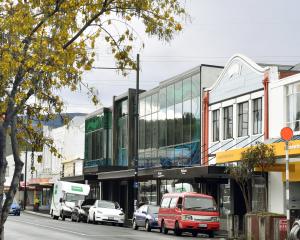Most local authorities have failed to fulfil their legal obligations to non-runanga Maori, Maori landowners and trustees, writes Ted Palmer.
It must be comforting for some local ratepayers that Otago Regional councillor Gerrard Eckhoff is monitoring the Dunedin City Council’s decision to develop a rates remission policy taking into account the special connection Maori have with the land (ODT, 27.7.16).
Cr Eckhoff says ratepayers will be "intrigued to understand the principle the council has employed that allows for rates remission for Maori freehold land not producing revenue".
The answer is in the Local Government Act 2002: clauses 102, 108 and schedule 11.
Before European settlement, land was communally owned and hapu/whanau rangatira (chiefs) decided on its use and the utilisation of resources.
However, after the signing of the Treaty of Waitangi, the Crown’s land-purchasing agents essentially decided which areas would be retained by Maori and the sale price of the large areas purchased.
Unfortunately, insufficient land remained in Maori ownership to provide for future population growth.
As local Maori practised a subsidence lifestyle, moving around their seasonal food resources, they soon found their access to these traditional resources restricted by European settlers and recently introduced legislation.
During the late 1860s, the Maori Land Court commenced the sectionalisation of the allocated reserves into the European individual title ownership model.
By the 1880s it became apparent in the South that Maori-owned lands were either too small and/or infertile to sustain a growing local Maori population and many whanau were in a desperate plight.
In response, the Crown established the Smith Nairn commission to investigate the welfare of Southern Maori.
The Crown passed the 1906 South Island Landless Natives Act, which granted 50 acres (20ha) to adults and 20 acres to children, less any land already owned.
During the early 20th century, when the Crown was buying up the large estates for new settlers, the government of the day decided to grant large areas of poor-quality and isolated lands known as the Crown Waste lands in Otago, Southland and on Stewart Island to landless South Island Maori.
Neither central government nor local authorities have ever bothered to provide any facilities such as internal roading within these often large blocks of land, resulting in many sections now being landlocked.
Today, many sections of local freehold Maori land have a varied mix of issues.
Since the introduction of the Te Ture Whenua Maori Land Act 1993, to sell a section of land, 75% of the registered owners must agree to the transaction and it must be first offered to related hapu.
This sounds relatively easy, but many sections were originally allocated to multiple ownership and now, in some instances, in excess of 30% of the ownership shares have not been succeeded to, often for several generations.
Likewise, many shares are now so small many owners are no longer interested in succeeding, as the potential benefits exceed the $61 Maori Land Court application filing fee.
Many owners also now live considerable distances from the lands and have lost interest, as travel costs exceed the potential benefits likely to be derived from the lands.
Another significant factor affecting Maori lands has been local authority district plans containing significant natural area vegetation zones, which in some cases have covered up to 60%-70% of some sections.
Some years ago, when one of our trusts with this district plan zoning issue sought a rates rebate, we were turned down.
This resulted in hundreds of hectares becoming a de facto Doc reserve.
Another impediment to land use has been the invasion of European weeds such as gorse, broom, hawthorn etc from adjoining European-owned lands.
Cr Eckhoff speaks of fairness and justice, yet Maori land ratepayers have been forced to pay Tb possum-control levies and, in this year’s proposed Otago Regional Council annual plan, wilding pines.
So in all fairness, perhaps in next year’s annual plan the ORC should be allocating a sum to assist with the removal of these European weeds from Maori freehold lands on the same basis as wilding pines from Crown and private-owned lands?
I am a trustee of a large section of freehold Maori land in Otago, which pays both its local and regional council rates.
Virtually all local authorities have failed to fulfil their legal obligations in terms of the LGA and RMA to non-runanga Maori, Maori landowners and trustees.
From the documentation I hold, it would appear that for the 2012-13 year the ORC paid a "subscription" of $12,000 to Kai Tahu ki Otago Ltd, which represents local Kai Tahu runanga for its Te Ropu Taiao Otago activities.
Insofar as some ratepayers will be curious to know why the DCC is going to develop a Maori land rates remission policy, they will be also be curious to know why it is necessary for the ORC to pay Kai Tahu runanga a subscription from their rates when individual runanga receive $400,000pa from the tribal authority.
Perhaps Cr Eckhoff should inform all ORC ratepayers what the current year’s amount is?
In the spirit of the fairness and justice principles Cr Eckhoff holds so dearly, when is the ORC going to financially assist all other Otago Maori not covered by the above-mentioned Te Ropu Taiao Otago arrangement to engage with the council in terms of the Local Government Act 2002?
- Ted Palmer, of Dunedin, is trustee of several sections of Maori land.









